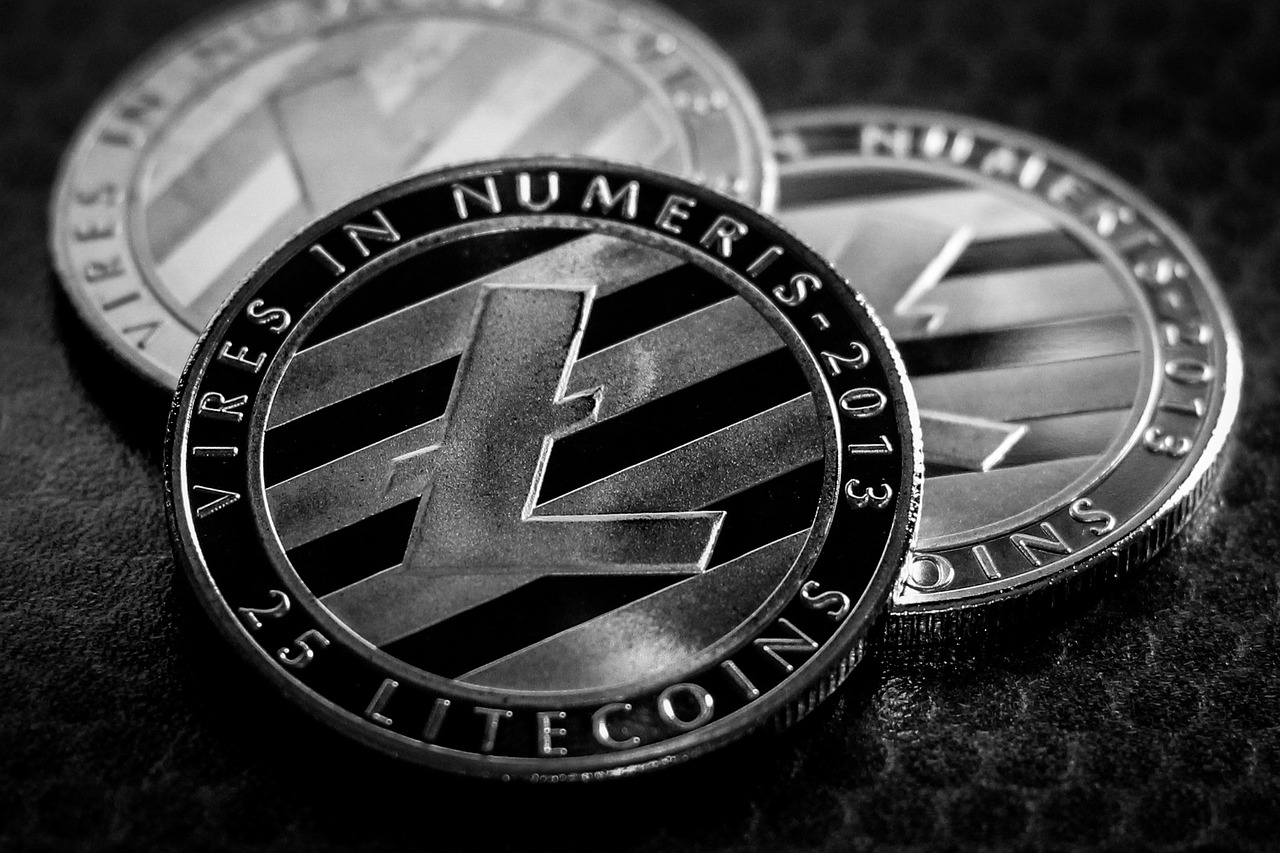The Rise of Algorithmic Stablecoins
In recent years, the world of cryptocurrency has undergone a significant transformation, and at the forefront of this change are algorithmic stablecoins. Unlike traditional stablecoins that are often pegged to fiat currencies like the US dollar, algorithmic stablecoins utilize complex algorithms to maintain price stability. This innovative approach is not just a technological marvel; it represents a shift in how we think about money in a digital age. But what exactly are these algorithmic stablecoins, and why are they gaining so much traction in the crypto community?
Algorithmic stablecoins are designed to provide a stable value while also being decentralized, which is a key principle of cryptocurrency. The allure of these digital currencies lies in their ability to operate without the need for physical collateral, such as cash reserves or commodities. Instead, they rely on smart contracts and algorithms to manage supply and demand dynamically. This mechanism not only offers the potential for price stability but also opens up new avenues for financial innovation.
As we delve deeper into the mechanisms behind algorithmic stablecoins, we will uncover the benefits they offer, the challenges they face, and what the future may hold for this exciting segment of the cryptocurrency market. With the rise of decentralized finance (DeFi) and an increasing interest in digital assets, algorithmic stablecoins are poised to play a crucial role in shaping the future of finance. So, buckle up as we explore this fascinating topic and uncover the layers of complexity that make algorithmic stablecoins a hot topic in today’s financial landscape.
- What are algorithmic stablecoins? - Algorithmic stablecoins are digital currencies that maintain price stability through algorithms rather than being backed by physical assets.
- How do algorithmic stablecoins differ from traditional stablecoins? - Traditional stablecoins are typically pegged to fiat currencies, while algorithmic stablecoins adjust their supply based on market conditions.
- What are the benefits of using algorithmic stablecoins? - Benefits include decentralization, reduced reliance on fiat currencies, and the potential for lower volatility.
- What challenges do algorithmic stablecoins face? - Challenges include regulatory scrutiny and market adoption issues.
- What does the future hold for algorithmic stablecoins? - The future is promising, with potential technological innovations and integration with traditional finance.

Understanding Algorithmic Stablecoins
Algorithmic stablecoins are a fascinating innovation in the world of digital currencies, designed to maintain a stable value without relying on traditional collateral like fiat currencies or commodities. Instead of pegging their value to a specific asset, these stablecoins utilize complex algorithms and smart contracts to manage supply and demand dynamically. This approach allows them to respond to market fluctuations in real-time, making them a unique player in the cryptocurrency landscape.
To truly grasp the concept of algorithmic stablecoins, it's essential to understand their foundational principles. Unlike traditional stablecoins, which are often backed by reserves of fiat currency or other assets, algorithmic stablecoins operate on the premise of self-regulation. They aim to achieve price stability through mechanisms that automatically adjust the supply of the coin based on current market conditions. This innovative design not only enhances their resilience against market volatility but also promotes a decentralized financial ecosystem.
The primary goal of algorithmic stablecoins is to provide users with a reliable medium of exchange that remains stable in value, even amidst the unpredictable nature of cryptocurrency markets. For instance, if the price of an algorithmic stablecoin begins to rise above its target value, the system can automatically increase supply to bring the price back down. Conversely, if the price drops below the desired threshold, the supply can be reduced. This constant balancing act is what sets algorithmic stablecoins apart from their traditional counterparts.
One of the most appealing aspects of algorithmic stablecoins is their potential for decentralization. By removing the need for centralized authorities or reserves, these digital currencies promote a trustless environment where users can transact freely without the fear of manipulation or inflation. This decentralization not only enhances user confidence but also aligns with the core principles of blockchain technology, which emphasizes transparency and security.
However, it's important to note that while algorithmic stablecoins offer exciting possibilities, they also come with challenges. The complexity of their mechanisms can sometimes lead to unexpected outcomes, especially during extreme market conditions. Users must be aware of these dynamics as they navigate the world of algorithmic stablecoins. Understanding how these coins function, and the risks involved, is crucial for anyone looking to participate in this innovative financial technology.
| Feature | Algorithmic Stablecoins | Traditional Stablecoins |
|---|---|---|
| Backing | No collateral; relies on algorithms | Backed by fiat or commodities |
| Price Stability Mechanism | Supply adjustment based on demand | Fixed peg to an asset |
| Decentralization | Highly decentralized | Often centralized |
| Market Response | Dynamic and can be volatile | More stable but can be influenced by reserves |

Mechanisms Behind Algorithmic Stability
Algorithmic stablecoins are fascinating financial instruments that utilize complex mechanisms to maintain price stability without relying on traditional collateral. At their core, these digital currencies operate through sophisticated algorithms that adjust supply based on real-time market conditions. This adaptability is what sets them apart from their collateralized counterparts, which are backed by physical assets like fiat currency or cryptocurrencies. By understanding the underlying mechanisms, we can appreciate how these stablecoins strive to achieve equilibrium in a notoriously volatile market.
One of the primary methods employed by algorithmic stablecoins is known as the rebase mechanism. This approach involves dynamically adjusting the circulating supply of the stablecoin in response to its price fluctuations. When the price of the stablecoin rises above its target value, the algorithm increases the supply, effectively diluting the value of each token. Conversely, if the price falls below the desired threshold, the supply is reduced, thereby increasing the value of remaining tokens. This process is akin to a seesaw: as one side rises, the other must lower to maintain balance.
Rebase mechanisms can significantly impact the user experience and overall ecosystem of algorithmic stablecoins. When a rebase occurs, users may see their balances adjusted automatically. This can lead to confusion or frustration, especially for those unfamiliar with how rebasing works. For instance, if you hold 100 tokens and a positive rebase of 10% occurs, your balance would increase to 110 tokens. However, the value of each token may still fluctuate based on market demand. Thus, while your token count increases, the actual purchasing power may not necessarily improve, leading to a paradoxical situation.
In the realm of rebasing, there are two distinct types: positive rebases and negative rebases. Positive rebases occur when the price of the stablecoin exceeds its target, prompting an increase in supply. This is designed to bring the price back down to its intended level. On the other hand, negative rebases happen when the price falls below the target, resulting in a decrease in supply to help stabilize the price. Each type of rebase has different implications for users:
| Type of Rebase | Effect on Supply | Impact on Users |
|---|---|---|
| Positive Rebase | Increases supply | May dilute value but aims to stabilize price |
| Negative Rebase | Decreases supply | May increase value but can lead to confusion |
Market reactions to rebasing events can also be quite volatile. Traders and investors often respond to these adjustments with a mix of excitement and caution. Historical examples show that when a rebase occurs, it can lead to significant price movements, as speculators rush to capitalize on perceived opportunities. Understanding these market dynamics is crucial for anyone looking to navigate the landscape of algorithmic stablecoins effectively.
When comparing collateralized stablecoins to algorithmic models, it's essential to recognize the trade-offs involved. While collateralized stablecoins offer a sense of security backed by tangible assets, algorithmic stablecoins provide a level of flexibility and decentralization that appeals to many users. The choice between these two approaches often comes down to individual preferences regarding risk and reward. As the market evolves, both models may coexist, catering to different segments of the cryptocurrency community.
In summary, the mechanisms behind algorithmic stability are intricate and multifaceted. By leveraging rebasing and responding to market fluctuations, algorithmic stablecoins aim to provide a reliable means of exchange in the ever-changing cryptocurrency landscape. As we continue to explore this innovative financial technology, it’s crucial to stay informed about the mechanisms that drive these digital assets.
- What are algorithmic stablecoins? Algorithmic stablecoins are digital currencies designed to maintain price stability through algorithms instead of being backed by collateral.
- How do rebasing mechanisms work? Rebasing mechanisms adjust the supply of the stablecoin based on market conditions, increasing or decreasing the number of tokens in circulation.
- What is the difference between positive and negative rebases? Positive rebases increase supply to lower the price, while negative rebases decrease supply to raise the price.
- What are the benefits of algorithmic stablecoins? They offer decentralization, reduced reliance on fiat currencies, and the potential for lower volatility.
- What challenges do algorithmic stablecoins face? Key challenges include regulatory scrutiny and market adoption issues.

Rebase Mechanisms
Rebase mechanisms are a fascinating aspect of algorithmic stablecoins, designed to maintain price stability by adjusting the supply of the stablecoin based on prevailing market conditions. Imagine a seesaw that keeps balancing itself as weight is added or removed; that's essentially how rebasing works. When the price of the stablecoin strays from its peg—let's say it drops below $1—the protocol automatically increases the supply of the coin, distributing additional tokens to holders. Conversely, if the price rises above $1, the supply is reduced, effectively removing tokens from circulation. This dynamic adjustment aims to guide the price back to its target level, creating a self-regulating system.
The mechanics of rebasing can be broken down into a few key steps:
- Price Monitoring: Continuous tracking of the stablecoin's market price against its target.
- Supply Adjustment: Based on the price deviation, the protocol calculates the necessary changes to the total supply.
- Distribution: New tokens are minted and distributed to existing holders, or tokens are burned to decrease supply.
The impact of rebasing on users can be both exhilarating and perplexing. For example, when a positive rebase occurs, holders may find themselves with more tokens in their wallets, which sounds fantastic! However, if the price has not stabilized, the increased quantity of tokens might not translate into greater value. This paradox can lead to confusion and volatility in user sentiment, as traders grapple with the implications of their changing balances.
Furthermore, rebasing can create a unique trading environment. Traders often speculate on upcoming rebase events, leading to fluctuations in demand and supply. The anticipation of a positive or negative rebase can drive prices up or down, resulting in a rollercoaster of market activity. Historical examples, such as the rebasing events of popular stablecoins, have shown that market reactions can be unpredictable, with some traders capitalizing on the volatility while others may experience significant losses.
In essence, rebase mechanisms are both a boon and a bane. They offer a novel approach to maintaining price stability, but they also introduce complexity and uncertainty. As the landscape of algorithmic stablecoins continues to evolve, understanding the intricacies of rebasing will be crucial for both users and investors alike.

Positive and Negative Rebases
When it comes to algorithmic stablecoins, the concepts of positive and negative rebases are fundamental to understanding how these digital currencies maintain their stability. At its core, rebasing is an automated adjustment of the token supply based on market conditions. But what does that really mean for users? Let’s break it down.
A positive rebase occurs when the price of the stablecoin is above its target value, prompting an increase in the total supply of tokens. Imagine you have a balloon that's inflated just a bit too much. To bring it back to its ideal size, you need to add more air. Similarly, in a positive rebase, the algorithm increases the number of tokens in circulation. This can lead to a temporary increase in the number of tokens each holder possesses, but it also means that the value of each token may decrease as the market adjusts to the new supply.
On the flip side, a negative rebase happens when the token's price falls below its target. Think of it as a balloon that’s deflated. In this scenario, the algorithm reduces the total supply of tokens, effectively removing some from circulation. Users may find that their token balance decreases, which can be disheartening. However, the idea behind this mechanism is to create scarcity, potentially driving the price back up as demand outstrips supply.
To illustrate the effects of positive and negative rebases, consider the following table:
| Type of Rebase | Effect on Supply | Impact on Token Holders |
|---|---|---|
| Positive Rebase | Increases supply | More tokens, potential decrease in value |
| Negative Rebase | Decreases supply | Fewer tokens, potential increase in value |
The market's reaction to these rebasing events can be quite volatile. Traders often speculate on the outcomes, leading to price swings that can be unpredictable. For instance, during a positive rebase, some traders might sell off their tokens to capitalize on the inflated supply before the value drops. Conversely, during a negative rebase, panic selling can occur, further driving down prices as users rush to liquidate their holdings.
In essence, while positive and negative rebases are designed to stabilize the token’s price, they can create a rollercoaster of emotions for investors. Understanding these mechanisms is crucial for anyone looking to engage with algorithmic stablecoins. Are you ready to navigate this exciting yet complex landscape?

Market Reactions to Rebasing
When it comes to algorithmic stablecoins, rebasing can trigger a whirlwind of reactions in the market. Think of it like a roller coaster ride—one moment you're climbing steadily, and the next, you're in a free fall. Traders and investors often react to rebasing events with a mix of excitement and apprehension, as these adjustments can significantly impact their holdings. For instance, when a rebasing event occurs, the supply of the stablecoin is altered, which can lead to immediate price fluctuations. This volatility can create both opportunities and risks for those involved.
Historical data shows that market reactions to rebasing are not always predictable. In some cases, a positive rebasing (where the supply increases) may lead to a surge in demand, as users anticipate future price stability. Conversely, a negative rebasing (where the supply decreases) can create panic, leading to a sell-off as investors rush to cut their losses. This dynamic creates a fascinating, albeit risky, environment for traders. To illustrate this, let's take a look at a few notable examples:
| Event | Type of Rebase | Market Reaction |
|---|---|---|
| Event A | Positive | Price surged by 20% within hours |
| Event B | Negative | Price dropped by 15% within hours |
| Event C | Positive | Steady increase in user adoption |
As we can see from the table, the type of rebasing can lead to drastically different outcomes. Traders often find themselves caught in a whirlwind of emotions, trying to make sense of the chaos. This uncertainty can lead to a herd mentality, where individuals follow the crowd rather than making informed decisions. It's essential for traders to stay vigilant and informed, as understanding the underlying mechanisms of rebasing can provide a significant edge.
Moreover, the psychological aspect of trading during rebasing events cannot be overstated. Fear and greed can drive market behavior, leading to irrational decisions. For example, when a negative rebase occurs, traders may panic and sell off their assets, fearing a continuous decline. On the flip side, a positive rebase might create a FOMO (fear of missing out) effect, prompting investors to jump in without fully understanding the implications. Thus, the emotional reactions to rebasing events play a crucial role in shaping market dynamics.
In summary, market reactions to rebasing in algorithmic stablecoins are complex and multifaceted. They involve a delicate dance between supply adjustments and investor psychology. As the landscape of cryptocurrency continues to evolve, understanding these reactions will be vital for anyone looking to navigate the thrilling yet unpredictable world of algorithmic stablecoins.
- What is rebasing in algorithmic stablecoins? Rebasing is the process of adjusting the supply of a stablecoin based on market conditions to maintain its price stability.
- How do positive and negative rebases differ? Positive rebases increase the supply of the stablecoin, while negative rebases decrease it, each affecting market dynamics differently.
- Why do market reactions to rebasing matter? Market reactions can lead to significant price fluctuations, impacting traders' decisions and the overall stability of the stablecoin.
- How can traders prepare for rebasing events? Staying informed about upcoming rebasing events and understanding their potential impacts can help traders make more informed decisions.

Collateralization vs. Algorithmic Models
When diving into the world of stablecoins, one of the most intriguing debates centers around collateralization versus algorithmic models. At first glance, these two approaches may seem like two sides of the same coin, but they represent fundamentally different philosophies on how to maintain price stability in the tumultuous waters of cryptocurrency. Understanding these differences is crucial for anyone looking to navigate the digital currency landscape.
Collateralized stablecoins are backed by tangible assets, typically fiat currencies or other cryptocurrencies. This means that for every stablecoin issued, there is an equivalent amount of collateral held in reserve. For instance, if a stablecoin is pegged to the US dollar, one dollar must be kept in reserve for each token in circulation. This mechanism provides a sense of security and trust, particularly for users who may be wary of the volatility inherent in other cryptocurrencies.
On the other hand, algorithmic stablecoins operate without such backing. Instead of relying on physical assets, they use complex algorithms to control supply and demand. This model aims to automate stability through market mechanisms. For example, if the price of an algorithmic stablecoin rises above its target value, the system will increase supply to bring the price back down. Conversely, if the price drops, it will decrease supply to help stabilize the value. This approach can be likened to a thermostat regulating temperature—adjusting output based on real-time feedback.
Here’s a quick comparison of the two models:
| Feature | Collateralized Stablecoins | Algorithmic Stablecoins |
|---|---|---|
| Backing | Physical assets (fiat or crypto) | No physical backing; relies on algorithms |
| Price Stability | Stable due to collateral | Dynamic; relies on supply adjustments |
| Trust | High trust due to reserves | Trust in the algorithm and system |
| Flexibility | Less flexible; tied to collateral | More flexible; can adapt to market conditions |
While both models have their strengths, they also come with inherent weaknesses. Collateralized models can suffer from liquidity issues, especially during market downturns when users rush to redeem their stablecoins. This can lead to a situation where the collateral is insufficient to cover all redemptions, resulting in a loss of trust and value.
Algorithmic models, while innovative, are not without their pitfalls either. The reliance on algorithms means that they can be susceptible to market manipulation and sudden fluctuations. Historical examples, such as the collapse of the TerraUSD (UST) stablecoin, highlight the risks associated with algorithmic stability. When market conditions turned unfavorable, the algorithms failed to maintain the peg, leading to a rapid devaluation.
In conclusion, the choice between collateralization and algorithmic models ultimately comes down to user preference and risk tolerance. Some may prefer the security and predictability of collateralized stablecoins, while others may be drawn to the innovative and flexible nature of algorithmic models. As the cryptocurrency market continues to evolve, understanding these differences will be key for investors and users alike.
- What are stablecoins? Stablecoins are cryptocurrencies designed to maintain a stable value by pegging them to a reserve asset, like a fiat currency.
- How do collateralized stablecoins work? They are backed by reserves of assets, ensuring that each stablecoin issued has a corresponding value held in collateral.
- What are the risks of algorithmic stablecoins? They can be volatile and susceptible to market manipulation, as seen in past collapses of certain algorithmic models.
- Which type of stablecoin is better? It depends on individual preferences; collateralized stablecoins offer security, while algorithmic stablecoins provide flexibility.

Benefits of Algorithmic Stablecoins
Algorithmic stablecoins are gaining traction in the cryptocurrency landscape, and for good reason. These digital currencies offer a plethora of benefits that can significantly enhance the user experience and the overall functionality of financial transactions. One of the most compelling advantages is their ability to provide decentralization. Unlike traditional stablecoins that often rely on a centralized authority to maintain their value, algorithmic stablecoins operate through automated mechanisms that adjust supply based on market demand. This decentralization fosters a sense of trust among users, as it reduces the risks associated with centralized control.
Moreover, algorithmic stablecoins are designed to minimize volatility, which is a common issue in the cryptocurrency market. While many cryptocurrencies experience wild price fluctuations, algorithmic stablecoins strive to maintain a stable value. This is particularly appealing for users looking for a reliable medium of exchange or a safe haven during market downturns. The potential for reduced volatility stems from their unique operational mechanisms, which react to market conditions in real-time. Imagine a financial tool that adjusts its value automatically to keep pace with changing market dynamics!
Another significant benefit is the reduced reliance on fiat currencies. In a world where fiat currencies can be subject to inflation and other economic pressures, algorithmic stablecoins provide an alternative that is not tethered to any single government or financial institution. This independence can empower users, especially in regions with unstable currencies, allowing them to engage in global transactions without the fear of losing value due to local economic issues.
Additionally, the flexibility of algorithmic stablecoins makes them appealing for various use cases, from remittances to decentralized finance (DeFi) applications. They can seamlessly integrate into existing blockchain ecosystems, enabling innovative financial products and services. For instance, users can leverage these stablecoins for lending, borrowing, and trading without the constant worry of value depreciation. This adaptability is crucial in a fast-evolving financial landscape.
However, it's essential to recognize that these benefits come with their own set of challenges. To fully understand the impact of algorithmic stablecoins, we must also consider their operational models and how they interact with the broader financial ecosystem. The ongoing evolution of these digital assets will undoubtedly shape their role in the future of finance.
- What are algorithmic stablecoins?
Algorithmic stablecoins are digital currencies that maintain price stability through automated algorithms rather than being backed by physical assets or fiat currencies. - How do algorithmic stablecoins reduce volatility?
They adjust their supply in response to market demand, helping to stabilize their value even in fluctuating markets. - Are algorithmic stablecoins decentralized?
Yes, they operate without a central authority, which enhances trust and reduces risks associated with centralized control. - Can algorithmic stablecoins be used for everyday transactions?
Absolutely! They can serve as a reliable medium of exchange and are increasingly being adopted for various financial services.

Decentralization and Trust
When you think about cryptocurrencies, one of the first words that probably comes to mind is decentralization. This principle is at the heart of what makes algorithmic stablecoins so intriguing. Unlike traditional currencies, which are often controlled by central banks, algorithmic stablecoins operate on a decentralized network. This means that no single entity has the power to manipulate or control the currency. Instead, it’s governed by a set of algorithms and smart contracts that ensure its stability and reliability.
But why does decentralization matter? Well, it fundamentally enhances trust among users. In a world where financial institutions have faced numerous scandals and crises, people are increasingly looking for alternatives that offer transparency and security. With algorithmic stablecoins, users can verify transactions and the underlying mechanisms through the blockchain, which is a public ledger. This transparency fosters a sense of confidence, as users can see exactly how their assets are being managed and can trust that the system operates fairly.
Moreover, the decentralized nature of algorithmic stablecoins reduces the risk of censorship or interference from governments or financial institutions. Imagine a scenario where a government decides to freeze your bank account or limit your access to funds. With algorithmic stablecoins, such risks are significantly diminished because the control lies in the hands of the users, not a central authority. This empowerment is a game-changer for individuals, especially in regions where financial systems are unstable or oppressive.
However, it’s essential to recognize that decentralization is not without its challenges. While it promotes trust, the lack of a governing body can lead to issues with accountability. If something goes wrong, users may find it difficult to seek recourse or support. This paradox of decentralization—where freedom can sometimes come at the cost of security—highlights the need for robust community guidelines and support systems within the ecosystem.
In summary, the relationship between decentralization and trust in algorithmic stablecoins is a complex yet fascinating topic. As users become more aware of the benefits of decentralization, they are likely to embrace algorithmic stablecoins as a viable alternative to traditional financial systems. The challenge lies in maintaining this trust while navigating the inherent complexities of a decentralized framework.
- What are algorithmic stablecoins? Algorithmic stablecoins are digital currencies designed to maintain price stability through algorithms rather than being pegged to a specific asset.
- How do algorithmic stablecoins differ from traditional stablecoins? Unlike traditional stablecoins that are backed by physical assets, algorithmic stablecoins rely on algorithms to control supply and demand.
- Why is decentralization important? Decentralization enhances trust by removing the control of a single entity, allowing users to verify transactions independently.
- What are the risks associated with algorithmic stablecoins? Risks include market volatility, regulatory scrutiny, and potential lack of accountability in a decentralized environment.

Reduced Volatility
One of the most compelling features of algorithmic stablecoins is their potential to achieve compared to traditional cryptocurrencies. Imagine a world where your digital assets don't swing wildly like a rollercoaster; that's the promise these stablecoins hold. Unlike their more erratic counterparts, algorithmic stablecoins utilize sophisticated mechanisms to maintain a stable value, often pegged to a fiat currency like the US Dollar.
The fundamental idea behind these coins is to create a balance between supply and demand through automated processes. When the demand for the stablecoin increases, the algorithm can automatically adjust the supply to maintain its price stability. Conversely, if demand decreases, the supply can be reduced, helping to cushion the coin's value against market fluctuations.
To illustrate how algorithmic stablecoins work in practice, consider the following example:
| Scenario | Market Demand | Supply Adjustment | Impact on Value |
|---|---|---|---|
| High Demand | Increased | New coins are minted | Price stabilizes around the peg |
| Low Demand | Decreased | Coins are burned | Price remains stable |
This table shows a simplified view of how algorithmic stablecoins manage their supply based on market demand. The beauty of this system lies in its ability to react quickly to changes in the market, allowing these coins to maintain their value more effectively than traditional cryptocurrencies, which often lack such responsive mechanisms.
Moreover, the reduced volatility of algorithmic stablecoins makes them attractive for various use cases. For instance, they can serve as a reliable medium of exchange, enabling users to conduct transactions without the fear of sudden price drops. Imagine using your digital currency to buy coffee, knowing that the value won't plummet by the time you reach the checkout counter. This stability can enhance user confidence and promote wider adoption.
However, it's essential to note that while algorithmic stablecoins aim for reduced volatility, they are not entirely immune to market forces. External factors such as regulatory changes, market sentiment, and overall economic conditions can still impact their performance. Therefore, while the promise of stability is appealing, users must remain vigilant and informed about the broader landscape in which these digital assets operate.
In conclusion, the concept of reduced volatility in algorithmic stablecoins represents a significant step forward in the cryptocurrency realm. By leveraging technology and algorithms, these coins offer a more stable alternative to traditional cryptocurrencies, paving the way for their potential integration into everyday financial transactions.
- What are algorithmic stablecoins? Algorithmic stablecoins are digital currencies designed to maintain price stability through automated mechanisms that adjust supply based on market demand.
- How do algorithmic stablecoins achieve reduced volatility? They use algorithms to automatically increase or decrease the supply of the stablecoin in response to changes in market demand, helping to stabilize its value.
- Are algorithmic stablecoins completely risk-free? No, while they aim to reduce volatility, external factors can still affect their performance, so users should remain informed about the market.

Challenges Facing Algorithmic Stablecoins
While algorithmic stablecoins present exciting opportunities in the cryptocurrency landscape, they are not without their challenges. One of the primary hurdles is regulatory scrutiny. As governments around the world grapple with the implications of digital currencies, algorithmic stablecoins often find themselves at the center of regulatory discussions. The lack of clear guidelines can create uncertainty for developers and users alike, stifling innovation and adoption. For instance, a sudden regulatory crackdown can lead to significant price volatility, shaking investor confidence.
Moreover, the market adoption of algorithmic stablecoins poses another significant challenge. With the cryptocurrency market already saturated with various offerings, gaining traction can be tough. Users often gravitate toward well-established stablecoins that have proven their reliability over time. To stand out, algorithmic stablecoins must demonstrate not only their stability but also their utility in everyday transactions. The question remains: how can they convince users to switch from traditional stablecoins?
Additionally, algorithmic stablecoins rely heavily on complex algorithms and mechanisms to maintain their value. If these systems fail or are manipulated, the consequences can be dire. For example, a miscalculation in the algorithm could lead to a sudden loss of value, causing panic among users. This risk is compounded by the fact that many potential users may not fully understand how these mechanisms work, leading to skepticism and hesitance in adopting these innovative assets.
Another challenge is the liquidity issue. Many algorithmic stablecoins struggle to maintain sufficient liquidity, especially during times of market stress. If users cannot easily buy or sell their stablecoins, it undermines the very purpose of having a stable asset. This can lead to a situation where the stablecoin becomes volatile, defeating its purpose and driving users back to traditional fiat currencies.
In summary, while algorithmic stablecoins have the potential to revolutionize the financial landscape, they must navigate a complex web of challenges. Addressing regulatory concerns, enhancing market adoption, ensuring robust mechanisms, and maintaining liquidity are critical steps that need to be taken for these digital assets to thrive in the competitive world of cryptocurrency.
- What are algorithmic stablecoins? Algorithmic stablecoins are digital currencies that use algorithms to maintain price stability, differentiating them from traditional stablecoins that are backed by collateral.
- Why are regulatory concerns important for algorithmic stablecoins? Regulatory concerns can affect the development, adoption, and overall stability of algorithmic stablecoins, as unclear regulations may lead to market volatility.
- How do liquidity issues impact algorithmic stablecoins? Insufficient liquidity can prevent users from easily buying or selling their stablecoins, leading to price fluctuations and undermining their intended stability.

Regulatory Concerns
The rise of algorithmic stablecoins has sparked significant interest and excitement in the cryptocurrency community, but it has also raised a multitude of . As governments and regulatory bodies around the world scramble to understand this innovative financial technology, the implications for algorithmic stablecoins could be profound. With their unique operational models and decentralized nature, these digital assets challenge traditional financial regulations, leading to a complex landscape that is still evolving.
One of the primary regulatory challenges facing algorithmic stablecoins is the lack of clear definitions. Unlike traditional currencies or even collateralized stablecoins, which are backed by tangible assets, algorithmic stablecoins operate on a set of algorithms designed to maintain price stability. This ambiguity makes it difficult for regulators to categorize them, leading to uncertainty about how existing laws apply. For instance, should they be treated as securities, currencies, or something entirely new? This question remains a hot topic among policymakers.
Moreover, the decentralized nature of algorithmic stablecoins complicates the ability of regulatory bodies to enforce compliance. Without a central authority, it becomes challenging to monitor transactions or hold entities accountable for non-compliance. This lack of oversight can lead to potential risks, including money laundering and fraud, which regulators are keen to mitigate. The anonymity that many users enjoy when transacting with these stablecoins could be seen as a double-edged sword, offering privacy while simultaneously raising red flags for authorities.
Another significant concern involves the potential for market manipulation. Given that algorithmic stablecoins rely on supply adjustments to maintain stability, there is a risk that bad actors could exploit this mechanism for personal gain. For example, if a large holder of the stablecoin decides to sell off a significant portion of their holdings, it could trigger a negative rebase, leading to a sharp decline in value. Such scenarios could undermine user trust and lead to broader market instability, prompting regulators to step in to protect investors.
To illustrate the ongoing regulatory landscape, consider the following table that summarizes some key regulatory considerations for algorithmic stablecoins:
| Regulatory Aspect | Description |
|---|---|
| Definition Clarity | Lack of consensus on how to classify algorithmic stablecoins. |
| Decentralization | Challenges in enforcing compliance without a central authority. |
| Market Manipulation | Risks associated with supply adjustments and potential exploitation. |
| Investor Protection | Need for regulations to safeguard users against fraud and volatility. |
As the regulatory landscape continues to evolve, it's crucial for developers and users of algorithmic stablecoins to stay informed and engaged. Collaboration between the cryptocurrency community and regulators could pave the way for a more stable and secure environment for these innovative financial products. By fostering open dialogue and transparency, both parties can work towards creating a framework that encourages innovation while protecting consumers.
In conclusion, while algorithmic stablecoins hold immense potential to revolutionize the financial landscape, they are not without their challenges. Regulatory concerns are at the forefront of discussions, and how these issues are addressed will significantly shape the future of these digital assets.
- What are algorithmic stablecoins? Algorithmic stablecoins are digital currencies that maintain price stability through algorithms rather than being backed by physical assets.
- Why are regulatory concerns important? Regulatory concerns are crucial as they address potential risks such as fraud, market manipulation, and the need for consumer protection.
- How can developers address regulatory challenges? Developers can engage with regulators, advocate for clear definitions, and implement best practices to enhance transparency and compliance.

Market Adoption Issues
Gaining traction in the crowded cryptocurrency market is a formidable challenge for algorithmic stablecoins. Despite their innovative mechanisms and potential benefits, these digital assets face several hurdles that can hinder widespread acceptance. One of the primary issues is the lack of understanding among potential users. Many individuals are still unfamiliar with how algorithmic stablecoins operate, which can create skepticism and reluctance to adopt these new financial tools. It's akin to trying to sell a smartphone to someone who has only ever used a flip phone; the unfamiliar technology can be daunting.
Moreover, the competitive landscape of the cryptocurrency market is fierce. Traditional stablecoins, like Tether (USDT) and USD Coin (USDC), have established a strong foothold. They benefit from a sense of security and trust that algorithmic stablecoins have yet to achieve. Users often prefer the stability and backing of fiat currencies, which can make it difficult for algorithmic variants to gain traction. Furthermore, the volatility associated with some algorithmic stablecoins can deter potential investors. For instance, if a user sees a stablecoin's value fluctuate significantly, they might question the reliability of the entire system.
Another significant barrier is the regulatory landscape. As governments around the world grapple with how to regulate cryptocurrencies, algorithmic stablecoins often find themselves in a gray area. Potential users may hesitate to adopt these assets, fearing future regulations could impact their value or usability. This uncertainty can create a chilling effect on market adoption. Additionally, regulatory bodies are increasingly scrutinizing the cryptocurrency sector, which could lead to stringent rules that stifle innovation and deter users.
To illustrate the current market landscape, consider the following table that compares traditional stablecoins with algorithmic stablecoins:
| Feature | Traditional Stablecoins | Algorithmic Stablecoins |
|---|---|---|
| Backing | Fiat-collateralized | Algorithmically controlled |
| Price Stability | High | Variable, dependent on algorithms |
| User Trust | Established | Emerging |
| Regulatory Scrutiny | High | Increasing |
In conclusion, while algorithmic stablecoins present exciting possibilities, their path to market adoption is fraught with challenges. Overcoming the barriers of user education, competition, and regulatory uncertainty will be crucial for these digital assets to flourish. As the cryptocurrency landscape continues to evolve, the ability of algorithmic stablecoins to address these issues will ultimately determine their success in the marketplace.
- What are algorithmic stablecoins? Algorithmic stablecoins are digital currencies designed to maintain price stability through algorithms rather than being directly backed by fiat or other assets.
- How do algorithmic stablecoins maintain their value? They use various mechanisms, such as rebasing and supply adjustments, to respond to market demand and stabilize their price.
- What are the risks associated with algorithmic stablecoins? Risks include potential volatility, regulatory scrutiny, and a lack of user trust compared to traditional stablecoins.
- Can algorithmic stablecoins replace traditional stablecoins? While they offer unique benefits, widespread adoption will depend on overcoming significant challenges and gaining user trust.

The Future of Algorithmic Stablecoins
The future of algorithmic stablecoins is a topic that sparks both excitement and curiosity in the cryptocurrency community. As we look ahead, it's clear that these digital assets are not just a passing trend; they represent a potential paradigm shift in how we perceive stability in the volatile crypto market. With their innovative mechanisms and a promise of decentralization, algorithmic stablecoins could redefine the financial landscape.
One of the most compelling aspects of algorithmic stablecoins is their ability to integrate with emerging technologies. For instance, advancements in smart contract technology could enhance the functionality of these stablecoins, making them more efficient and user-friendly. Imagine a world where transactions are not only instantaneous but also cost-effective, thanks to algorithmic stablecoins that can adjust their supply in real time based on market demand. This kind of evolution could lead to greater adoption and trust among users.
Moreover, the integration of algorithmic stablecoins with traditional finance is another avenue worth exploring. As financial institutions begin to recognize the potential of these digital assets, we might see collaborations that bridge the gap between fiat currencies and cryptocurrencies. This could open up a plethora of opportunities, allowing users to leverage the benefits of both worlds. However, this integration will not come without its challenges, including regulatory hurdles and the need for robust security measures.
As we consider the potential for algorithmic stablecoins, it's essential to acknowledge the importance of regulatory clarity. Governments and regulatory bodies are beginning to take notice of the growing influence of cryptocurrency, and the frameworks they develop will significantly impact the future of algorithmic stablecoins. A well-defined regulatory environment can foster innovation while ensuring that users are protected. Conversely, overly restrictive regulations could stifle growth and limit the potential of these digital assets.
In conclusion, the future of algorithmic stablecoins is filled with possibilities. They hold the potential to revolutionize the way we think about stability in the financial world, offering a decentralized alternative to traditional financial systems. As technology evolves and regulatory frameworks adapt, we may witness a surge in the adoption of algorithmic stablecoins, making them a staple in both the cryptocurrency and traditional finance landscapes.
- What are algorithmic stablecoins? Algorithmic stablecoins are digital currencies designed to maintain price stability through algorithms, unlike traditional stablecoins which are often backed by fiat currencies.
- How do algorithmic stablecoins maintain their value? They use various mechanisms, such as rebasing and supply adjustments, to respond to market conditions and maintain a stable price.
- What are the risks associated with algorithmic stablecoins? Risks include regulatory scrutiny, market volatility, and the potential for technical failures in the underlying algorithms.
- Can algorithmic stablecoins integrate with traditional finance? Yes, there is potential for collaboration between algorithmic stablecoins and traditional financial institutions, although challenges remain.

Technological Innovations
The world of algorithmic stablecoins is not just about maintaining price stability; it's also a hotbed for that can reshape how we think about digital currencies. As the cryptocurrency landscape evolves, new technologies are emerging that enhance the functionality and efficiency of these stablecoins. One of the most exciting developments is the integration of smart contracts, which automate processes and reduce human error. Imagine a world where transactions are executed flawlessly, without the need for intermediaries. This is not just a dream; it's becoming a reality with algorithmic stablecoins.
Another significant innovation is the use of decentralized finance (DeFi) protocols. These protocols allow algorithmic stablecoins to interact seamlessly with various financial services, from lending and borrowing to yield farming. By leveraging DeFi, users can unlock new opportunities to earn passive income while maintaining the stability that algorithmic stablecoins promise. For instance, a user could deposit their stablecoins into a liquidity pool and earn interest while still enjoying the benefits of price stability.
Moreover, advancements in data analytics and machine learning are playing a crucial role in enhancing the mechanisms behind algorithmic stablecoins. Through sophisticated algorithms, these technologies can analyze market trends and adjust supply more effectively. This means that the stablecoins can respond to market fluctuations in real-time, providing a more resilient financial instrument for users. The ability to predict market movements with greater accuracy can significantly reduce the risks associated with volatility.
Furthermore, the rise of layer-2 solutions is another technological innovation that can improve the scalability and transaction speed of algorithmic stablecoins. By processing transactions off the main blockchain, these solutions can dramatically reduce congestion and lower fees, making it easier for users to transact without facing delays or high costs. Imagine being able to send and receive stablecoins instantly, without worrying about high gas fees or slow confirmations. This could very well be the future of digital transactions.
In conclusion, the technological innovations surrounding algorithmic stablecoins are not just enhancements; they are fundamental shifts that could redefine the financial landscape. As these technologies continue to develop, we can expect to see a more robust, efficient, and user-friendly ecosystem that makes the promise of stability a reality for everyone involved.
- What are algorithmic stablecoins?
Algorithmic stablecoins are digital currencies that use algorithms to maintain price stability, unlike traditional stablecoins that are backed by assets like fiat currency.
- How do algorithmic stablecoins maintain their value?
They adjust their supply based on market demand and supply conditions through mechanisms like rebasing.
- What are the benefits of using algorithmic stablecoins?
They offer decentralization, reduced volatility, and greater flexibility in financial transactions.
- What challenges do algorithmic stablecoins face?
Challenges include regulatory scrutiny, market adoption, and the need for technological advancements.
- What is the future of algorithmic stablecoins?
The future looks promising with ongoing technological innovations and potential integration with traditional finance.

Integration with Traditional Finance
As the world of finance continues to evolve, the integration of algorithmic stablecoins with traditional financial systems is becoming a hot topic. This fusion of digital and conventional finance presents both exciting opportunities and significant challenges. Imagine a world where the stability of your digital assets can seamlessly interact with your bank accounts, investment portfolios, and even credit systems. Sounds futuristic, right? Yet, it's closer than you might think!
One of the most promising aspects of this integration is the potential for enhanced liquidity. Algorithmic stablecoins can provide a bridge between the volatile cryptocurrency market and the more stable traditional finance sector. For instance, if a user wants to invest in stocks, they could easily convert their algorithmic stablecoins into fiat currency without the delays and fees typically associated with traditional exchanges. This kind of flexibility could revolutionize how we think about asset management.
However, the road to integration is not without its bumps. Regulatory hurdles are a significant concern. Financial authorities around the world are still figuring out how to classify and regulate these digital assets. Will they be treated like securities, or will they fall under different classifications? The answers to these questions will shape the future of algorithmic stablecoins in traditional finance. If regulations are too strict, they could stifle innovation and adoption, while overly lenient regulations might lead to market instability.
Moreover, the trust factor plays a crucial role in this integration. Traditional finance relies heavily on established institutions and regulatory frameworks to maintain trust and security. For algorithmic stablecoins to gain acceptance, they must demonstrate robust mechanisms that ensure user protection and prevent fraud. This could involve partnerships with established financial institutions that can lend credibility to these digital assets. By working together, traditional banks and algorithmic stablecoin projects can create a more secure and trustworthy environment for users.
In addition, we might see the emergence of new financial products that leverage the strengths of both worlds. For instance, imagine investment vehicles that allow users to earn interest on their holdings of algorithmic stablecoins while also being able to trade them on traditional exchanges. This would create a new class of assets that combine the best features of both digital and traditional finance.
Ultimately, the integration of algorithmic stablecoins with traditional finance is not just about technology; it's about changing mindsets. As more people become familiar with the benefits of digital currencies, the demand for their integration into everyday financial practices will grow. The challenge lies in ensuring that this integration is smooth, secure, and beneficial for all parties involved.
- What are algorithmic stablecoins?
Algorithmic stablecoins are digital currencies designed to maintain price stability using algorithms, rather than being backed by physical assets. - How do algorithmic stablecoins differ from traditional stablecoins?
Traditional stablecoins are typically backed by fiat currencies or other assets, while algorithmic stablecoins use algorithms to adjust supply and demand to maintain their value. - What are the main benefits of algorithmic stablecoins?
They offer decentralization, reduced reliance on fiat currencies, and the potential for lower volatility compared to traditional cryptocurrencies. - What challenges do algorithmic stablecoins face?
Challenges include regulatory scrutiny, market adoption issues, and the need for robust mechanisms to ensure trust and security. - What does the future hold for algorithmic stablecoins?
The future is promising, with potential technological innovations and increased integration with traditional finance on the horizon.
Frequently Asked Questions
- What are algorithmic stablecoins?
Algorithmic stablecoins are digital currencies that aim to maintain a stable value through the use of algorithms, rather than being backed by physical assets like fiat money. They adjust their supply automatically based on market demand to keep their price consistent.
- How do algorithmic stablecoins maintain their price stability?
These stablecoins utilize various mechanisms, such as rebasing, to adjust their supply in response to market fluctuations. When the price rises above a certain threshold, the supply increases (positive rebasing), and when it falls below, the supply decreases (negative rebasing).
- What are the advantages of using algorithmic stablecoins?
Algorithmic stablecoins offer several benefits, including enhanced decentralization, which reduces reliance on traditional financial systems, and the potential for lower volatility compared to other cryptocurrencies. This makes them appealing for users looking for stability in the crypto market.
- What challenges do algorithmic stablecoins face?
Despite their advantages, algorithmic stablecoins encounter challenges such as regulatory scrutiny, which could impact their development and use. Additionally, gaining market adoption in a competitive cryptocurrency landscape poses significant hurdles.
- Can algorithmic stablecoins integrate with traditional finance?
Yes, the integration of algorithmic stablecoins with traditional finance presents both opportunities and challenges. Collaborations with existing financial systems could enhance their utility, but it also raises questions about regulation and compliance.
- What is the future of algorithmic stablecoins?
The future of algorithmic stablecoins is promising yet uncertain. Technological innovations may improve their functionality, and as they gain traction, they could play a significant role in the broader financial ecosystem, potentially reshaping how we understand value in the digital age.



















